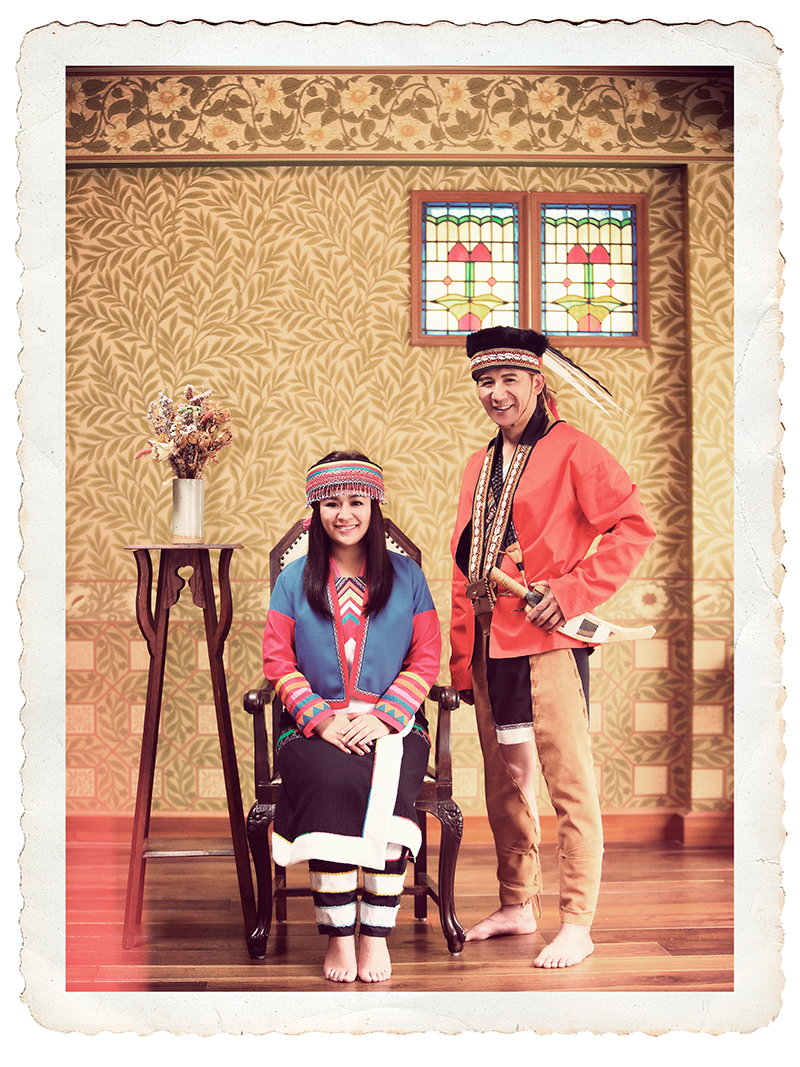
In May 2017, the Lalauya Village in Alishan was filled with joy and happiness. Today is the big day of Tsou groom Pasuya and Non-indigenous bride Lin Ming-Yuan, and they will be wed in a traditional Tsou wedding which is rarely seen nowadays. Following the ancient customs, they wore traditional costumes and prepared pork, wine and rice cakes to throw a feast for friends and family.
The Lalauya village has not seen a traditional wedding for decades. This is mainly because Tsou culture has been deeply influenced by external cultures, plus most of the people are churchgoers now, therefore most of them would choose to be married in western-style churches. A Catholic himself, Pasuya originally planned to get married in a church; however, since they had a traditional Minnan-style engagement ceremony, the bride’s parents suggested that the couple could get married in a traditional Tsou wedding. Bride Lin Ming-Yuan was very excited. “I think it’s wonderful that my parents came up with this idea!”
Winning Your Bride’ Hearts
with Voluntary Labor and Gifts
Having very limited knowledge on traditional Tsou wedding customs, the young couple sought guidance from Avaei.Vavayanan, leader of their hosa, Tefuye Village. The older man shared that in the past, their people would go and “kidnap a bride”. Because back then marriages were mostly arranged. When the parents saw a suitable girl, they would send out the men in the family to kidnap her. If the girl is in love with another, this lover will join in the fight.
Yet kidnapping a bride does not directly lead to marriage. Before the wedding, the potential groom has to do voluntary labor at the bride-to-be’s house during the day. Tasks included plowing the land or other labors so that the bride’s father can access the capabilities and personality of his potential son-in-law. “Simply put, it’s like an evaluation before the wedding.” Avaei.Vavayanan explained. The young man may need to work for two to three years, or even as long as ten years at his bride’s house. His own grandfather worked at his future wife’s house for seven years before actually getting married. But these customs gradually disappeared during the Japanese Colonization Period, and by Avaei.Vavayanan’s generation, the customs of kidnapping the bride and voluntary labor were already gone.
A traditional Tsou marriage proposal requires the groom’s family to visit the potential bride’s home with pork and wine and other foods. “During the proposal, the meaner the bride’s parents are, the more likely the proposal is going to be accepted. Sometimes they even mock-strike the groom's parents. When that happens, the groom’s family cannot strike back, or the entire proposal would fail.” Avaei.Vavayanan recalled that one of his relatives actually fought back, and, of course, the wedding did not happen.
On the day of the wedding, the groom’s family has to prepare rice cakes, pork, and homemade wine as gifts to the bride’s family. There are no guidelines on how much food should be prepared, but it would be best if the groom can provide a whole pig. The bride’s family will return half of it and share the gifts with other family and friends that have come to observe the ceremony and give blessings to the newlyweds.
The wedding staples all carry profound symbolic meanings. For example, usually rice cakes can be made with bananas, sweet potatoes, or cassava; but wedding rice cakes must be made with 100% glutinous rice. Because the sticky nature of the rice symbolizes “sticking the new couple together”. Also, in the past, only surplus millet were used to make millet wine.; thus presenting precious millet wine to the bride’s family shows how important the bride is to the groom.
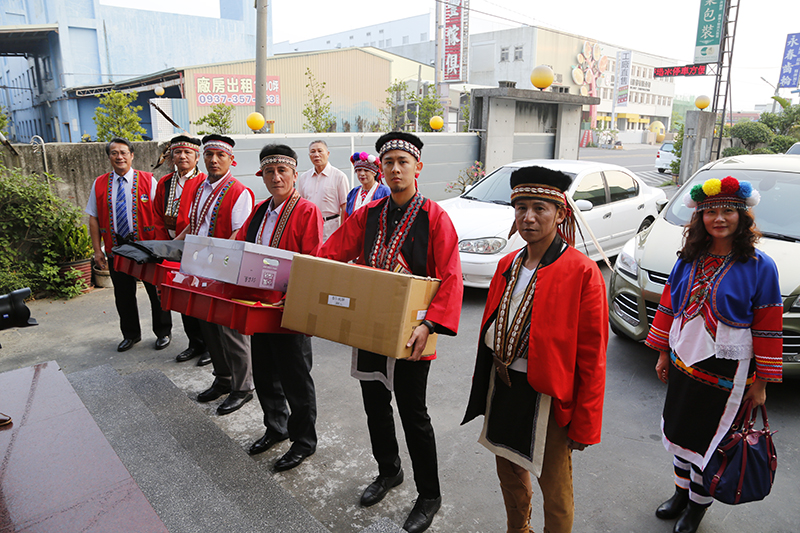
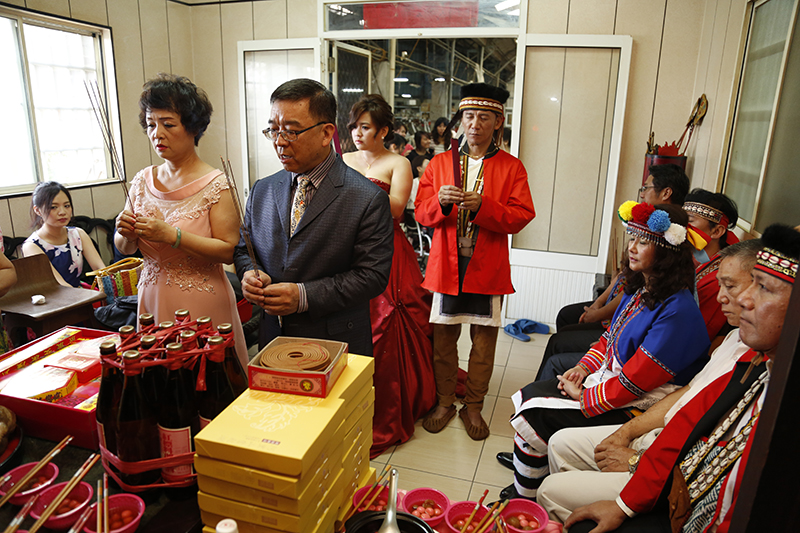
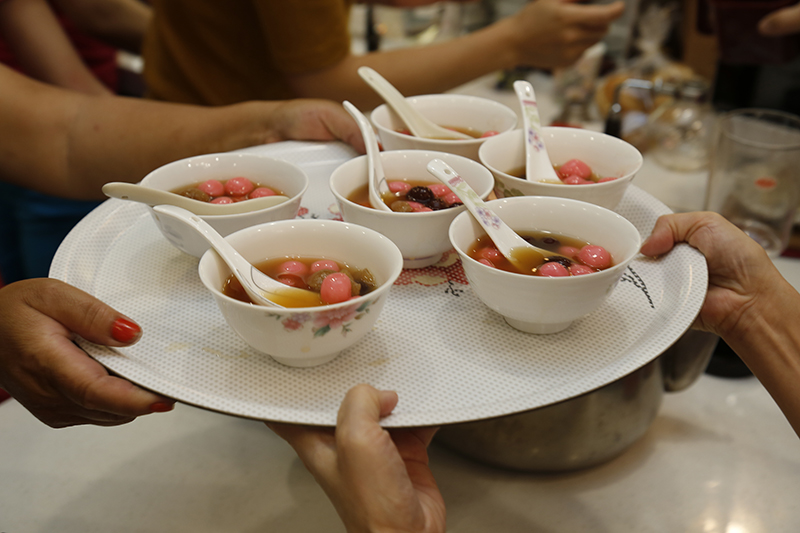
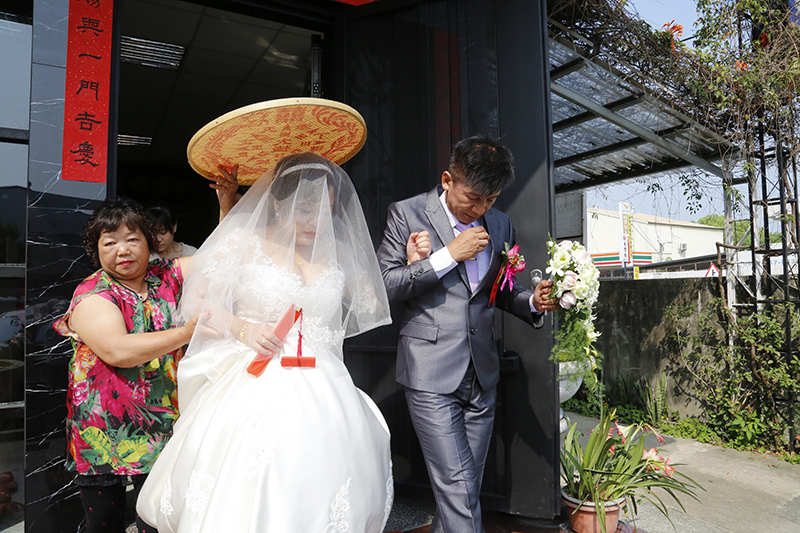
The groom brings betrothal gifts to the bride’s house. Other customs include praying to the ancestors, eating tangyuan (glutinous rice balls), and tossing out a fan.
Blessings from Elders and Guests
Make the Wedding More Complete
One of the most important rituals in a traditional Tsou wedding is the blessing of the elders. Newlyweds would invite elders of the family or village to salute the heaven, earth, and ancestors in their mother tongue, and then bless the couple. Pasuya and Lin invited Avaei.Vavayanan to complete this important rite which Pasuya considers the most meaningful part of the wedding. “We not only have the blessings of our families, but also the patriarch of Tefuye Village is here to give us blessings. He will inform the ancestors that there is a wedding in the family and invite them to join the ceremony and celebrations. If this was a church wedding, we will not have these procedures."
In the past, Tsou women were responsible for the farming chores. So during the wedding, the mother of the bride will prepare a small bunch of millet and a small hoe for the bride. After the blessing rite is completed, the parents will lead the bride outside to plant the grain, symbolizing future harvests and plenty of children for the couple. Then the bride will turn the soil with the small hoe to indicate she will be responsible for the laborious duty of producing food after the wedding. As for the groom, the family prepares a hunting knife, symbolizing the man is responsible for hunting in the mountains and safeguarding the community.
After all wedding rituals are completed, the feast begins. To celebrate this joyous day, the families of the couple will continuously offer food to everyone who comes to their houses to share the joy and happiness. The feast may last two to three days, sometimes even a month. “The wedding ceremony itself is usually short, but the food keeps on coming.” Avaei.Vavayanan added with a smile.
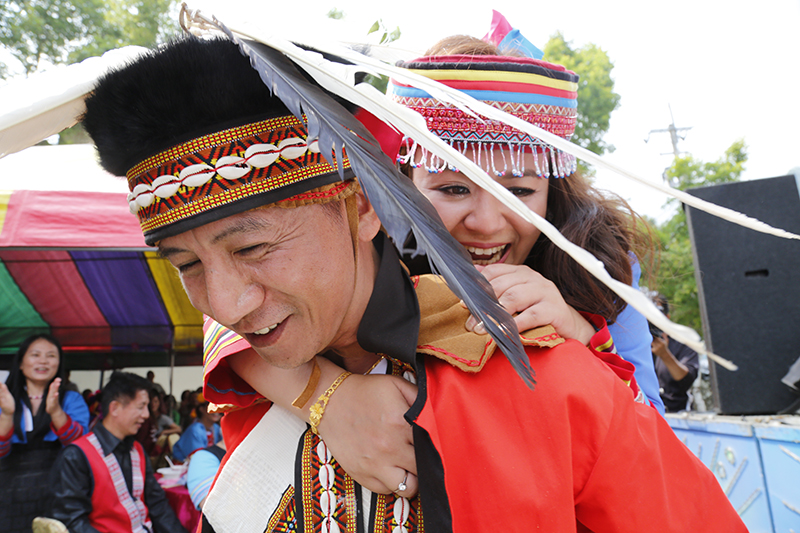
The groom has to carry the bride on his back. This symbolizes the groom is strong enough to support a family.
Setting a Detailed Example
with Complete Rituals and Customs
This Tsou and Non-indigenous marriage was a special opportunity for both parties to participate and learn more about each other’s wedding cultures. “The wedding customs of Tsou and Minnan are completely different! Minnan engagement ceremonies have customs such as “betrothal money” and “dowry money”. Both sides have to prepare a lot of things and follow a lot of detailed instructions. Whenever I think about it, it gives me a headache.” Pasuya smiled as he thought about the experience.
Lin Ming-Yuan's parents also thought that it is a wonderful opportunity to gain a deeper understanding of traditional Tsou weddings. When asked about how her family felt when they decided to have a traditional Tsou wedding, Lin Ming-Yuan laughed, “my family was pretty nervous when I told them I was going to marry a Tsou man and enter an indigenous household. But at the same time they were curious about what a Tsou wedding would look like.”
In fact, not only non-indigenous people are curious, a lot of younger community members had never witnessed a traditional wedding either. Pasuya viewed his wedding as a presentation. “I want to people know that we still have this wedding form so they have an additional choice when they wish to get married.”
A graduate from the Graduate Institute of Studies in Documentary & Film Archiving, Lin Ming-Yuan has long been making documents about different ethnic groups and issues related to indigenous peoples. She seized this opportunity and invited students from her alma mater to film and document the entire wedding procedure. “No one has gotten married in this type of traditional wedding for years. These images will later become significant research assets and material. I hope to let people see some ethnic symbols in my wedding and learn more about the traditional ceremonies of the Tsou people.”
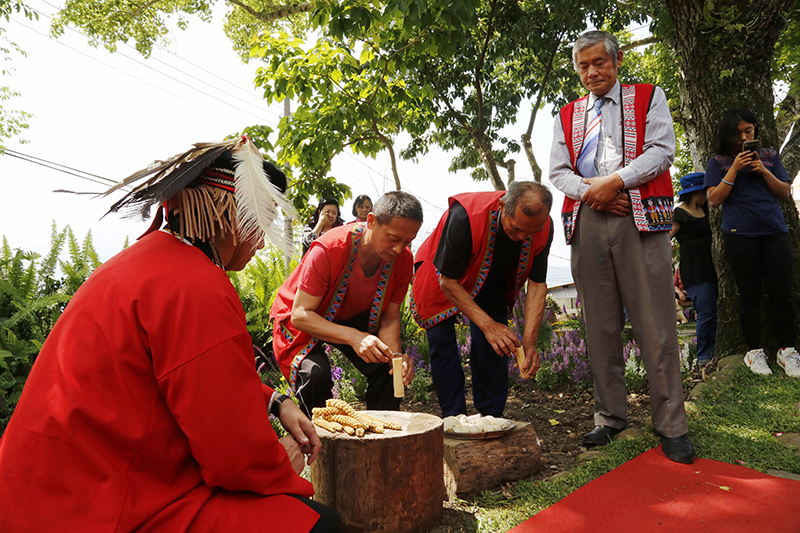
Community elders prepare stalks of millet and glutinous rice cakes to bless the newlyweds.
Core Beliefs
that Carry on the Essential Truth
Seeing that most young people today prefer simpler wedding ceremonies, Avaei.Vavayanan pointed out that traditional Tsou weddings do not have a lot of restrictions or customs, nor are there a lot of taboo. The courtship period seems relatively long because the groom has to work at the bride's house prior to the actual wedding. “This shows the young couple that easy to get married, but it takes time to make a marriage work.”
Three years into her marriage, Lin Ming-Yuan thinks that long period which almost seems trivial is exactly what contributes to the Tsou people’s notable sense of loyalty and devotion to their marriage. “Due to western influences, some people may take marriages very lightly. But traditional wedding customs, handed down from our ancestors, let the newlyweds understand that marriage is not easy and requires effort and time to make it work.”
Greatly affected by social changes, the traditions of the indigenous peoples are rapidly disappearing. “They are disappearing so fast. The traditions are gone and assimilated by the modern world before we even have a chance to learn the ancient wisdom. This is why so many young people do not know about these traditions and culture.” Lin Ming-Yuan said that if her children wish to marry in the future, she will encourage them to have a traditional wedding as well. “Even if some of the rites eventually do disappear, we still need to let the children know why it changed.”
Although some traditional customs are already gone, Avaei.Vavayanan is still optimistic. “Culture is supposed to change accordingly with the times and different mindsets. It would be impossible and impractical for us to remain exactly the same as our ancestors lived hundreds and thousands of years ago. As long as they still honor the core belief of our community rituals, young people are free to choose how they wish to get married.”
Now the wife to a Tsou husband, Lin Ming-Yuan is learning the Tsou language and community customs. “The indigenous people are the first inhabitants of this land and it is very meaningful that I get to learn from them. Every time when I walk in the mountains and forests with my husband and listen to him talk about the flora and fauna, I realize how much they know about the local environment. And this makes me feel more connected to this land I am living on.” A wedding is just a beginning. Through their eyes, we look forward to learning more about the wisdom and values of precious indigenous rituals.

Every step in the wedding has different meanings. By turning the soil, the bride shows that she is willing to toil for the family. The couple will work together to build a good life after the marriage.




